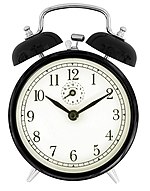
Time to get started
World History: The Early Modern Period #whme101 is an open online course. The course materials are hosted on this web site. Learners participate and interact using their own personal learning environments. You can learn how to set these up here.
Three things you should do before starting the course
- Register on this course site by clicking on the user icon () in the site menu.
This will enable you to submit microblog posts using WEnotes and manage your registered learning journal blog url if you use one. (Note: As an open course, registration is not mandatory and we will post copies of the course announcements on the course site.)
- Familiarise yourself with the web site navigation to find out where the:
- Course Syllabus, and
- Learning materials (see learning pathways in the menu above) are located.
- Review the:
Study tips
There are a few things you should know about World History: The Early Modern Period whme101 course:
- Course tag: The course code for Wold History: The Early Modern Period is: whme101. Write this down because you will use this tag for your blog posts.
- Course feed: The course hosts a live feed where you can monitor posts from WEnotes and participant blog posts using the “whme101” tag or label.
- WEnotes is the locally hosted microblog technology for posting comments to the course feed.
- Suggested study time: This is a self-paced course. You can work on completing this course at times which are convenient for your own schedule. The course is divided into ten learning pathways. The time you will need to successfully complete the course will vary according to your own experience and previous subject knowledge. Generally we estimate that the course material, together with time for revision and preparation for assessment, comprises approximately 40 learning hours in total. (Please note that the time required for each learning pathway may vary, as they contain differing amounts of material.) However, as an open course you can also select to learn about the topics you find interesting, dipping into selected course material as you wish.
- Using social media technologies: We recommend that you establish your personal learning environment before the course commences. Blogs are optional and provide a good way to interact with course participants while maintaining control over your own content. You can create a personal course blog or use an existing blog.
- Information overload: At times the aggregated feed can generate a large number of posts. You are not expected to read everything. Read what is current when you log in and follow the links which you find interesting. After a few days you will identify participants with similar interests and you can then follow these posters in the feed.
- Learn by doing and sharing: Most of all, have fun! We are changing the world for the better by returning to the core value of sharing knowledge in education.
World History: The Early Modern Period #whme101 is an open online course. The course materials are hosted on this web site. Learners participate and interact using their own personal learning environments. You can learn how to set these up here.
Three things you should do before starting the course
This will enable you to submit microblog posts using WEnotes and manage your registered learning journal blog url if you use one. (Note: As an open course, registration is not mandatory and we will post copies of the course announcements on the course site.)
Study tips
There are a few things you should know about World History: The Early Modern Period whme101 course:
Content is available under the
Creative Commons Attribution Share Alike License.
Privacy Policy | Authors